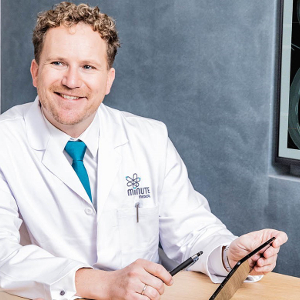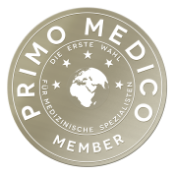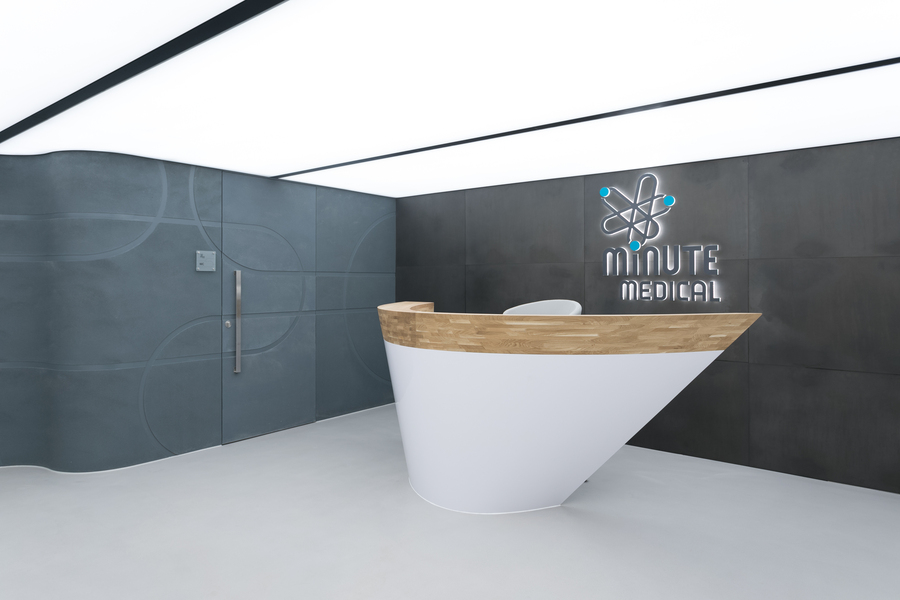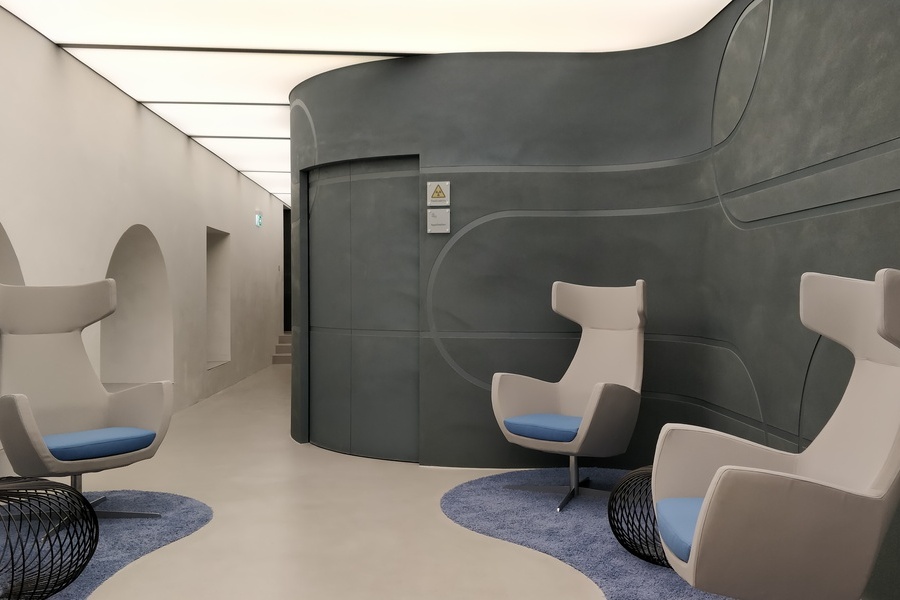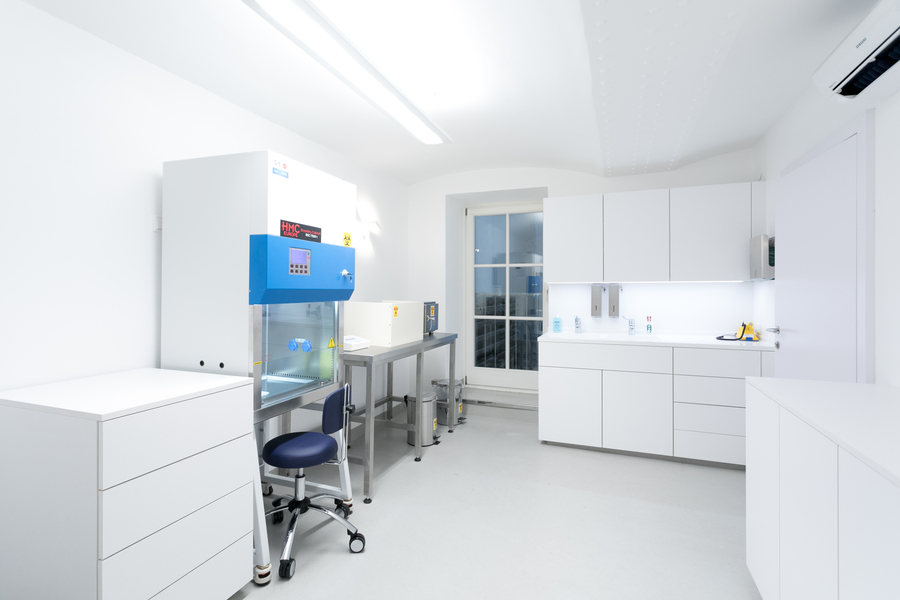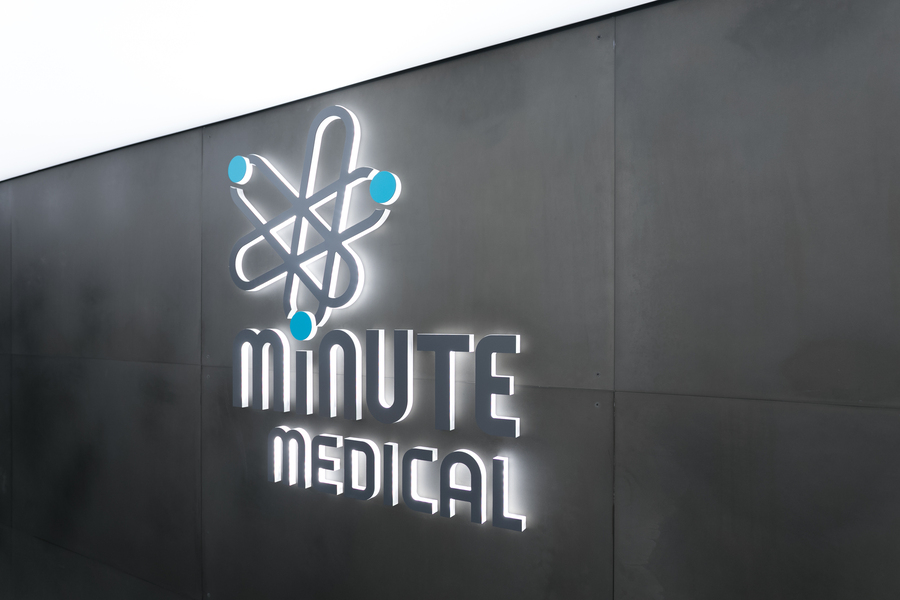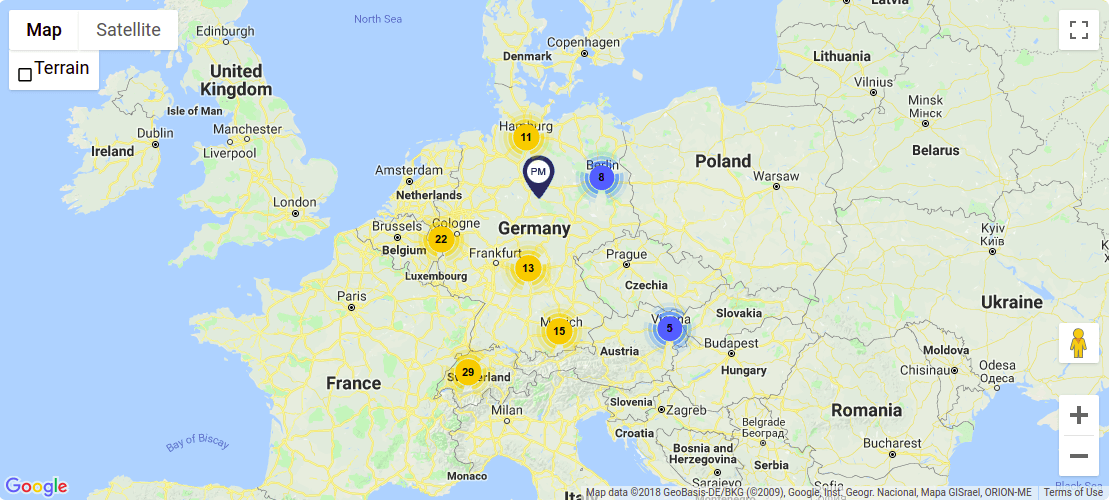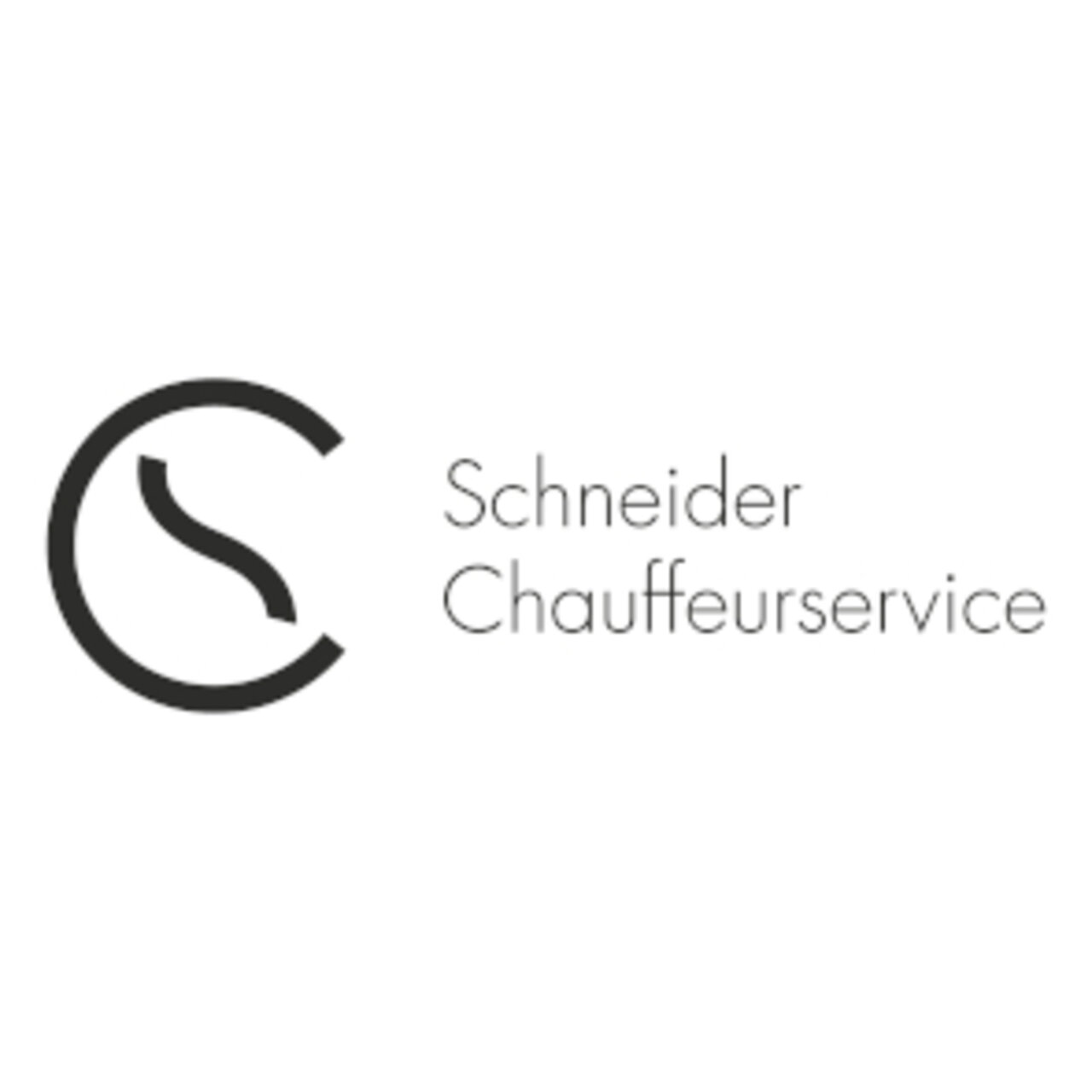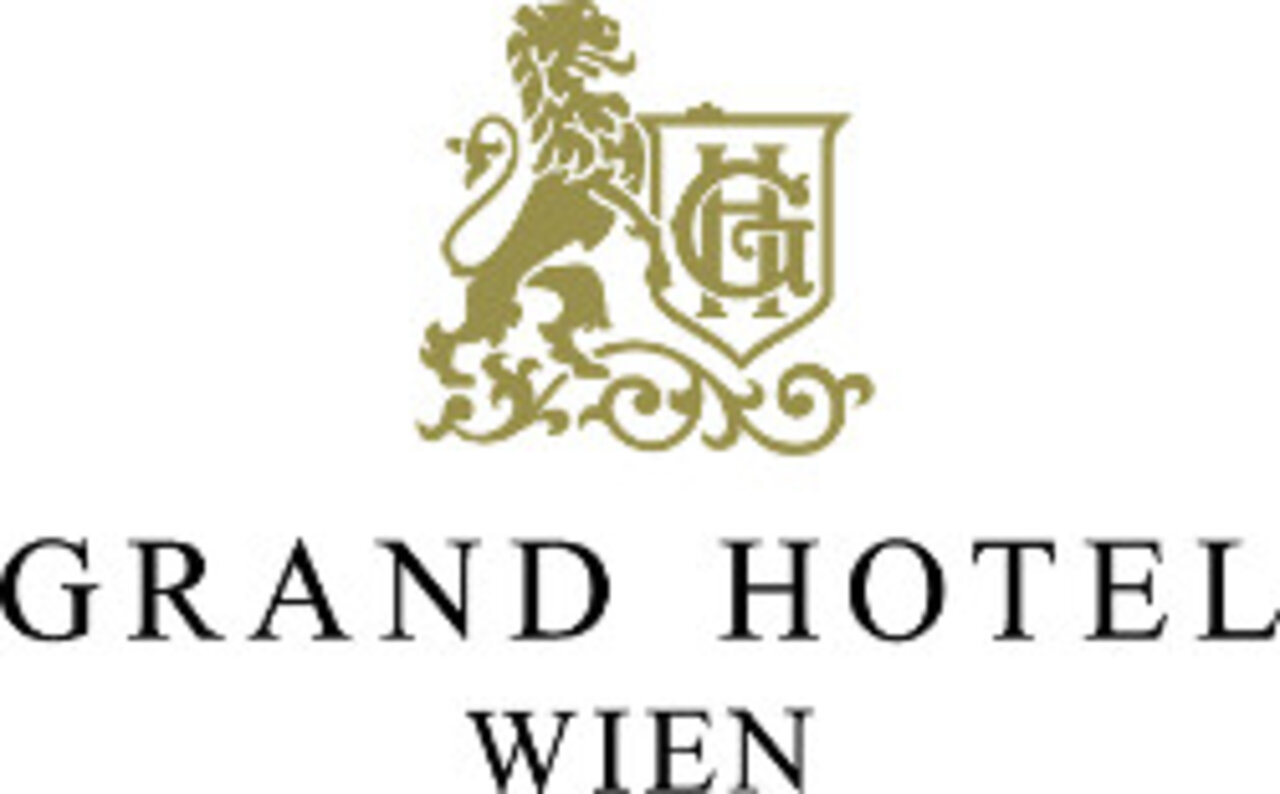MINUTE medical - Experts for Radionuclide Therapy Vienna
Treatment focus
- Prostate Cancer
- PSMA therapy (Lutetium, Actinium)
- Neuroendocrine tumors (NET)
- Peptide receptor radionuclide therapy (PRRT)
- PSMA PET/CT (Gallium-68)
- Therapy of bone metastases (Radium-223)
Contact
Hörlgasse 14/5, A-1090 Vienna
P: +43 1 358 9334(Private patients & self-insured)
Consultation Hours:
For private patients and self-paying patients
By Appointment
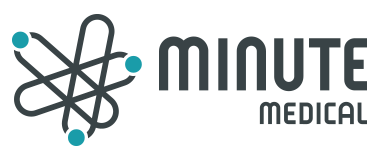
Medical Range
Diagnostic Range of Services
- 68Gallium PSMA PET/CT
- 68Ga Somatostatin receptor PET/CT
Therapeutic Range of Services
- PSMA therapy (lutetium, actinium)
- Peptide receptor radionuclide therapy (PRRT)
- Therapy of bone metastases (Radium-223)
More Information
Card
MINUTE medical offers specific, personalized cancer therapies with the highest professional, and scientific competence in the heart of Vienna.
As a nuclear medicine institute, MINUTE medical specializes in therapy and diagnostics using radioligands. This innovative treatment is based in principle on the knowledge that certain tumor cells carry specific receptors on their surface, which can serve as docking stations for so-called radiopharmaceuticals. As a result, the tumor cells can be irradiated very effectively, and the damage to the surrounding tissue can be reduced to a minimum.
The technology, developed according to the latest scientific findings, is paired with personalized individual care, guaranteeing extremely discreet treatment.
The experts led by the internationally renowned scientists Prof. Dr Markus Hartenbach, Prof. Dr Alexander Haug, and Prof. Dr Wolfgang Wadsak undoubtedly pioneered this now-established technology.
Radioligand Therapy for Prostate Cancer
The 177Lutetium-PSMA radioligand therapy is based on discovering that the degenerated cells of a prostate carcinoma present a very specific enzyme on the surface of their cell membrane. This prostate-specific membrane antigen (PSMA) serves as a docking station, so to speak, for the 177Lu-PSMA radioligands, which then exert their therapeutic effect through the radiating isotope of the chemical element lutetium. Depending on the severity and distribution pattern of the disease, Prof. Hartenbach's team also uses the alpha emitter actinium-225 instead of the beta emitter lutetium-177.
The radiation of these nuclides spreads only in a tiny radius of a few micrometers but is sufficient to effectively damage/destroy the cancer cell in question. Furthermore, collateral damage to surrounding healthy tissue is minimal thanks to this precise navigation of the radiation source to the target cells. This is the reason for the enormous advantage over radioactive irradiation by an external, comparatively imprecise radiation source.
By replacing the therapeutic emitter (lutetium or actinium) with the positron emitter gallium-68, the radioligands can also be used for nuclear medicine diagnostics of the same target structure. In this way, therapy can be effectively monitored.
Peptide Receptor Radionuclide Therapy for Neuroendocrine Tumors (PRRT).
Neuroendocrine tumors (NET) often respond to peptide receptor radionuclide therapy (PRRT). This treatment method also applies the finding that tumor cells of this type have so-called somatostatin receptors on the cell membrane in high abundance. The beta-emitter lutetium-177 has proven to be a therapeutic nuclide of choice in this therapy. Lutetium-177 is chemically fixed to the appropriate peptide (e.g., DOTA-TATE), a substance that fits like a "key" into the "lock," namely the somatostatin receptors on the tumor cells. This precise targeting of the radioligand allows the lutetium-177 to be navigated via the bloodstream directly to the cancer cells and destroy/damage them.
Radionuclide Therapy for Bone Metastases (Radium-223 Dichloride).
The principle of therapy with radionuclides is also very successful in bone metastases. Some tumors activate certain cell groups that are responsible for bone formation, the so-called osteoblasts. These are referred to as osteoblastic bone metastases. Osteoblasts typically embed calcium ions into the bone substance. If these bone-building cells are now offered radium ions, they are also embedded into the bone matrix due to their chemical relationship to calcium. The osteoblasts activated by the cancer are consequently effectively irradiated by self-embedded radium-223 dichloride. This also exerts its effect on the tumor cell through various mechanisms and, therefore, slows these metastases' progression.
Molecular Imaging: 68Gallium PSMA-PET/CT for Prostate Cancer Diagnosis and 68Ga-Somatostatin Receptor PET/CT for Neuroendocrine Tumors
Innovative radioligand technology enables high-precision molecular diagnostic capabilities. As an indispensable component of radioligand therapy, it combines diagnostics and treatment into a new approach called "theranostics." This is because radiopharmaceuticals, i.e., radioactive drugs that bind precisely to the specific surface structures of cancer cells, can also be charged with purely imaging nuclides, such as gallium-68, for diagnostic purposes (so-called radiodiagnostics). Through intravenous administration and distribution in the body, increased accumulation in the target structures throughout the body can be detected by nuclear imaging. Thus, this whole-body imaging can visualize those tissues that are diseased or metastatic.
Additional Services
The architecturally sophisticated combination of functionality and the highest level of discretion was a key factor in establishing this state-of-the-art institution. To offer patients the highest level of comfort, additional organizational and medical services are also provided. The MINUTE medical team supports patients from arrival to departure and during their stay in Austria's historical capital to make the medically necessary stay in Vienna as pleasant as possible.
Patients also benefit directly from the most modern medical care in terms of interdisciplinary cooperation. MINUTE medical works in an expert network in close collaboration with renowned specialists in pathology, urology, oncology, and radiation/proton therapy to ensure patients' best possible treatment and diagnostics.
For more information, please visit the MINUTE medical website.
Curriculum Vitae
Prof. Dr Markus Hartenbach
| Since 08/2018 | Managing Director of MINUTE medical GmbH Vienne |
| 12/2015 and 10/2018 | Assistant and Associate Professor of Nuclear Medicine at the Medical University of Vienna, Austria. |
| 03/2014-10/2018 | Senior Physician and Head of PET / MRI at Vienna General Hospital of the Medical University of Vienna, Austria |
| 01/2013-02/2014 | Parental Leave |
| 03/2012-12/2012 | Senior Physician and Representative Head of the Nuclear Medicine Section, German Armed Forces Hospital Ulm. Advanced Training in Radiology at the Interdisciplinary PET / CT |
| 03/2012 | Medical Specialist in Nuclear Medicine |
| 03/2011-02/2012 | Advanced Training CT / MRI, Clinic for Radiology, German Armed Forces Hospital Ulm |
| 01/2010-02/2011 | Ward Physician and Advanced Training PET / CT, Clinic for Nuclear Medicine, Ludwig-Maximilians-University Munich, Campus Großhadern, Medical Director: Prof. Dr P. Bartenstein |
| 12/2009 | Directing Senior Physician and Representative Head of Nuclear Medicine, German Armed Forces Hospital Ulm, Germany |
| 12/2009 | Radiation Protection Expertise |
| 03/2009 | Promotion to Senior Physician German Armed Forces Hospital Ulm |
| 12/2008 | Golden Cross of Honor of the German Armed Forces |
| 07/2008-12/2009 | Assistant Physician Nuclear Medicine German Armed Forces Hospital Ulm |
| 06/2007-06/2008 | Research Associate at the Institute for Radiobiology of the German Armed Forces in Munich |
| 11/2006 | Certification Investigator and Study Director (Competence Center for Clinical Studies at the University of Tübingen) |
| 10/2006 | Promotion an der Universität Ulm |
| 11/2005-05/2007 | Assistant Physician Nuclear Medicine German Armed Forces Hospital Ulm |
| 11/2005 | University degree and Promotion to Medical Officer |
| 10/1999-11/2005 | Study of Human Medicine at the University of Ulm |
| 01/1999-09/1999 | Officer Training Courses I and II in Horb a. Neckar and Munich |
| 01/1999 | Nomination as Medical Officer Candidate |
| 07/1998-12/1998 | Military Service in Kempten and Munich |
| 05/1998 | High School Diploma (Abitur) at Gymnasium Markt Schwaben, Bavaria |
Prof. Dr rer. nat. Wolfgang Wadsak
| Since 01/2019 | Secretary/Treasurer of the European Association of Nuclear Medicine (EANM) |
| Since 2017 | Scientific Leader - Area 1 (Data & Technologies), CBmed Ltd (Center for Biomarker Research in Medicine; Graz) |
| Since 10/2016 | Coordinator of Vienna Activities, Projects and Labs, CBmed Ltd (Center for Biomarker Research in Medicine; Graz) |
| Since 2016 | Safety Officer |
| Since 2016 | Secretary/Treasurer of the Austrian Society for Nuclear Medicine and Molecular Imaging (OGNMB) |
| Since 2016 | Director of the "Alliance for the Promotion of Radiopharmaceutical Sciences |
| Since 2015 | Auditor of the European Association of Nuclear Medicine (EANM) |
| Since 2015 | Board member of the Austrian Society of Nuclear Medicine and Molecular Imaging (OGNMB) |
| Since 2013 | Head of the "Development of Imaging Probes" Node in the Medical Imaging Cluster (MIC) @MedUni Vienna |
| Since 2012 | Associate Professor of Medical Radiochemistry, Head of the Department of Medical Radiochemistry and Biomarker Development, Medical University of Vienna |
| 2011 | 4-Month Scientific Internship at ETH Zurich, Switzerland |
| 2010-2012 | Assistant Professor, Department of Radiochemistry and Biomarker Development, Medical University of Vienna |
| 2009-2010 | Senior Post-Doc, Medical University of Vienna |
| Since 2009 | Lecturer for "Physiology and Pathology for Functional Imaging 1" at the University of Applied Sciences Wiener Neustadt (Master Program "MedTech") |
| 2009 | Habilitation; Medical Radiochemistry, Medical University of Vienna |
| Since 2005 | Radiation Safety Officer - Laboratories for Radiochemistry, Radiopharmacy, Psychiatry and Laboratory for Preclinical Imaging (PIL) |
| Since 2005 | Lecturer for "Medical Radiochemistry 1+2" at the University of Vienna |
| Since 2004 | Trainer and consultant for Bayer AG (former Schering AG), Vienna for radioimmunotherapy |
| Since 2003 | Lecturer for "Radiopharmacy" at the Academy for Radiology Technologists in Vienna (now: FH Vienna) |
| 2003-2004 | Postgraduate Studies in Radiopharmaceutical Chemistry, ETH Zurich/ Universities of Frankfurt and Leipzig |
| Since 2001 | Production Manager for PET Radiopharmaceuticals, University Clinic for Nuclear Medicine, Medical University of Vienna |
| 2001-2009 | University Assistant, Medical University of Vienna |
| 2000-2004 | Doctoral Studies (Radiochemistry), University of Vienna and Scientific Assistant, University Department of Nuclear Medicine, Medical University of Vienna |
| 1991-1999 | Master Studies in Chemistry, University of Vienna |
Prof. Dr Alexander Haug
| Since 2019 | Head of the Christian Doppler Laboratory for "Applied Metabolomics" |
| 2016 | Alavi-Mandell Award of the Society of Nuclear Medicine as Senior Author, twice |
| Since 2013 | Representative Director of the Department of Nuclear Medicine at the University Hospital AKH Vienna, Head of the Therapy Ward, and Associate Professor of Nuclear Medicine |
| 2013 | Habilitation for Molecular Imaging and Therapy of Neuroendocrine Tumors, venia docendi at the Ludwig-Maximilians-University Munich |
| 2011 | Wolfgang Becker Award of the Bavarian Society of Nuclear Medicine |
| 2010 | Nuclear Oncology Council Young Investigator Award of the Society of Nuclear Medicine, 3rd Place. |
| 2010 | Award of the Young Professionals Committee - Clinical Sciences of the Society of Nuclear Medicine (SNM), 2nd Place |
| As of 2009 | Head of the Therapy Ward, incl. Outpatient Care |
| 2009 | Specialist in Nuclear Medicine |
| 2004-2009 | Training in Nuclear Medicine at the University Hospital Munich |
| 2003 | Graduation from Ludwig-Maximilians-University Munich, Human Medicine |
| 07/1995-12/1996 | Military service |
| 05/1995 | High School Diploma (Abitur) at Ludwigsgymnasium in Straubing, Bavaria |
Team
 Prof. Dr Markus Hartenbach
Prof. Dr Markus Hartenbach
Medical Specialist in Nuclear Medicine
 Prof. Dr rer. nat. Wolfgang Wadsak
Prof. Dr rer. nat. Wolfgang Wadsak
Certified Radiopharmacist and Radiation Protection Representative
 Prof. Dr Alexander Haug
Prof. Dr Alexander Haug
Medical Specialist in Nuclear Medicine
Extras
- Outpatient radioligand therapy
- Interpreter
- Transfer service
- Highest discretion/privacy
- Individual care directly by renowned specialists
- A private institution with state-of-the-art equipment
Transport Connections
| City Center Vienna | 300 m |
| Vienna Main Station | 4.9 km |
| Vienna Airport | 20.7 km |
Information about Vienna
The Austrian capital is located in the east of the country at the junction of the eastern Alpine foothills and the Pannonian Plain. Its namesake is the small river Wien, but the city is associated with the much larger Danube River that also flows by the city. Vienna is divided into so-called districts, so the old town is also the Inner District, around which the other 22 districts are arranged concentrically. In 2001 the historic city centre was declared a UNESCO World Heritage Site.

